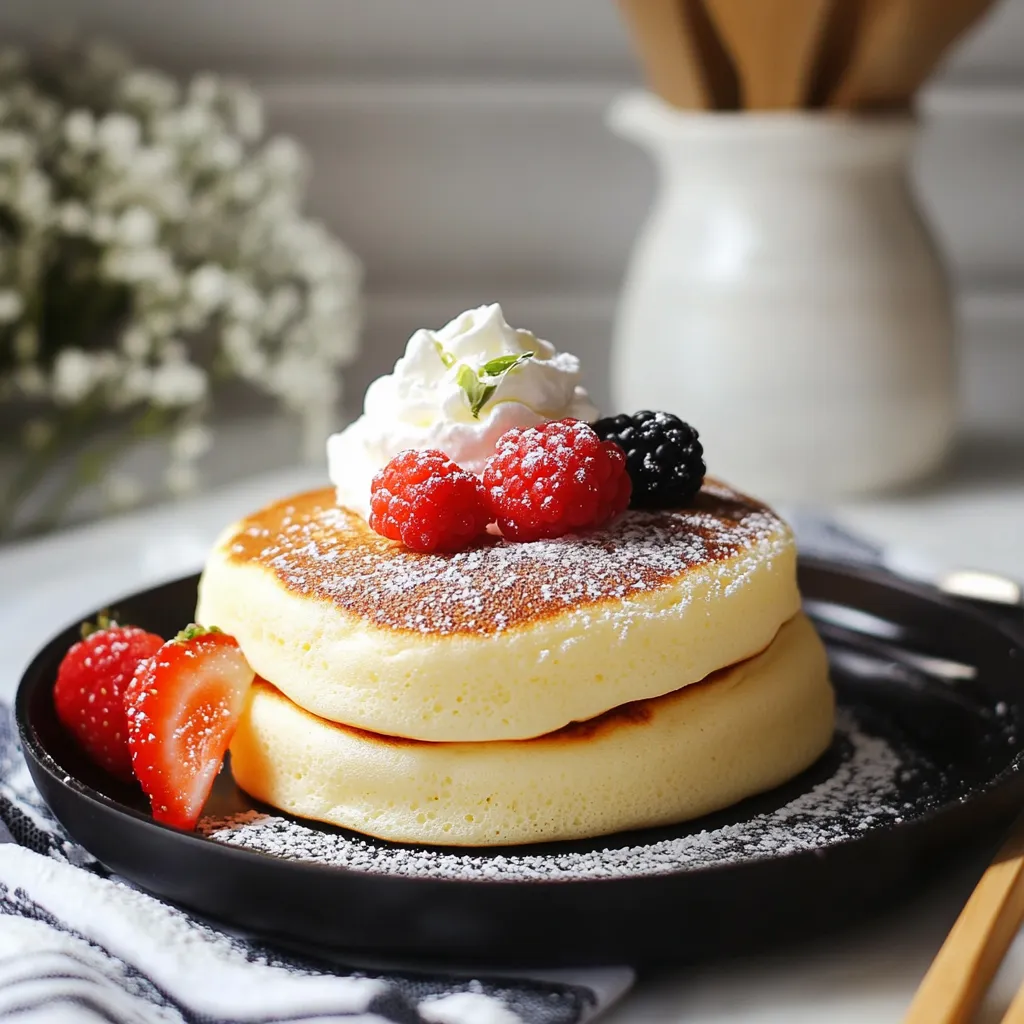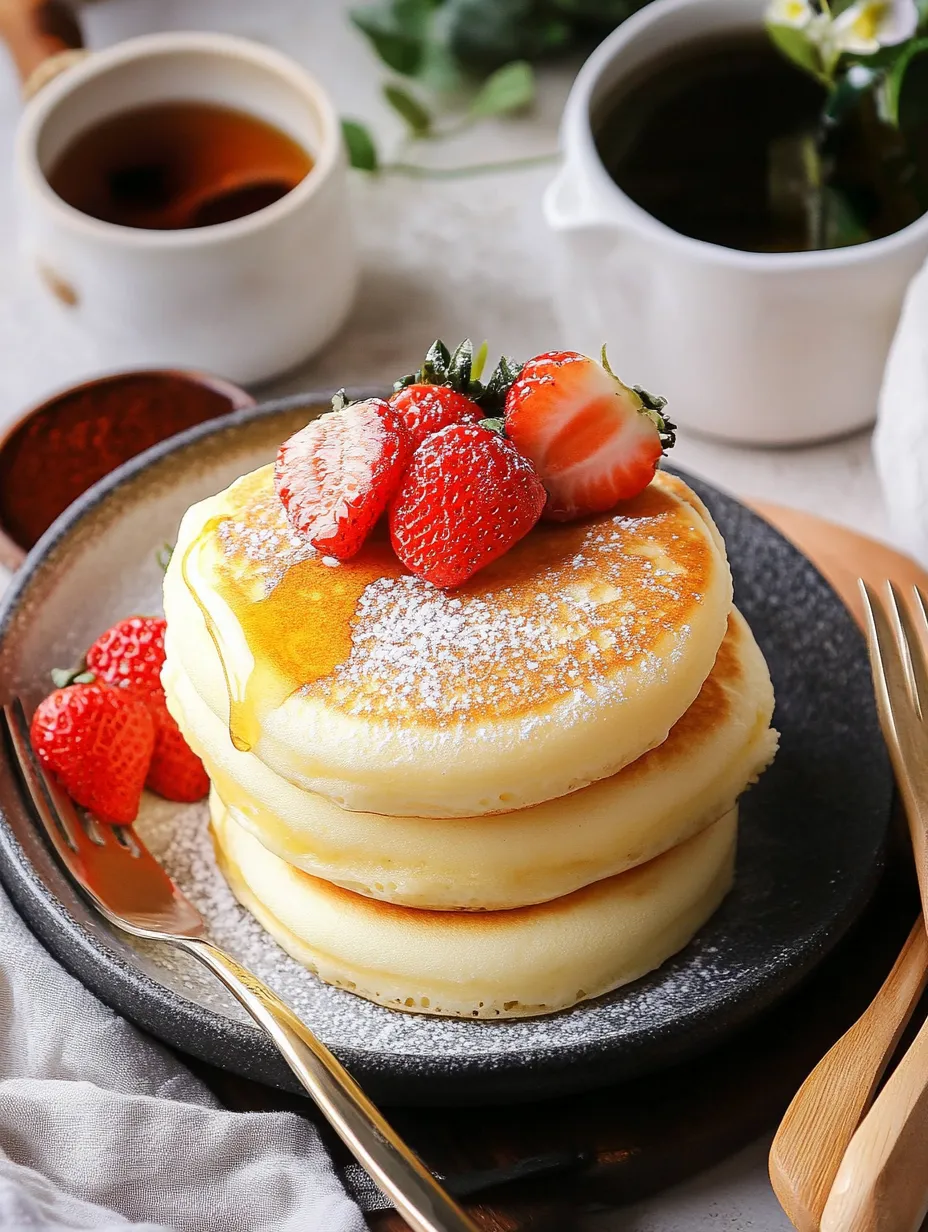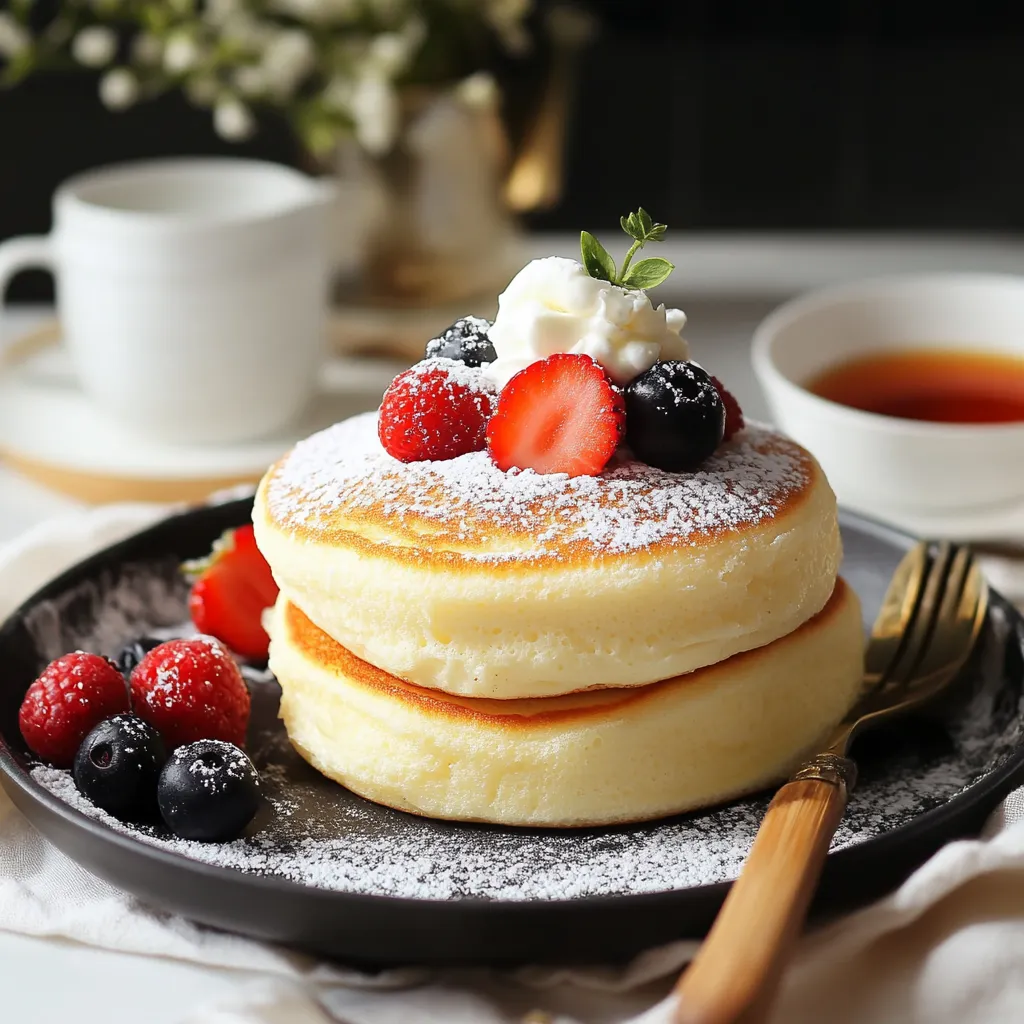 Pin it
Pin it
Japanese soufflé pancakes stand out with their light, airy feel - they're like little clouds that somehow stay upright. When done right, these pancakes wobble slightly on your plate, their impressive height showing off the care and time that went into making them. I got pretty obsessed with getting these fluffy treats just right in my home, and learned tons about how precise Japanese cooking really is.
I made these for a bunch of friends last Sunday morning, and everyone just stopped talking when they saw their pancakes jiggling on the plates. Even my pals who never cook wanted to try making them after they had a taste.
Key Ingredients and Smart Shopping Advice
- Eggs: Go for fresh eggs at room temp. If they're cold, you won't get enough air when whipping, and older eggs don't have the right proteins for good peaks. I set mine out exactly half an hour before I start cooking
- Milk: Pick whole milk for that needed fat that makes them soft. Make sure it's not cold so your batter stays at the right temp
- Flour: Plain all-purpose flour is fine, but run it through a sifter twice to get rid of any lumps
- Sugar: Get sugar that's really fine for best mixing in meringue. I just put regular sugar in my food processor for half a minute to make it finer
 Pin it
Pin it
Creating Perfect Meringue
The heart of these pancakes is all about those whipped egg whites. Start with a bowl that's totally clean and dry - even a tiny bit of oil or egg yolk will mess things up. Beat at medium speed until you see foam forming, then add just a tiny bit of cream of tartar or a couple lemon juice drops. This little bit of acid helps the proteins bond better, so your meringue won't fall flat.
 Pin it
Pin it
Managing Heat
Try to work in a cool kitchen and watch your ingredient temps carefully. Hot rooms can make meringues drip and batters sink. Once your meringue is ready, don't waste time - every minute counts before it starts to deflate. Keep your pan at a low, steady heat, about 300°F if you've got a thermometer handy.
Mixing With Care
Starting off right is super important. First, mix about a third of your meringue into the yolk mix pretty well - this first batch gets sacrificed to make the rest of the mixing easier. For the rest of the meringue, grab a big rubber spatula, cut right down the middle and scoop along the sides of the bowl. Stop as soon as you don't see any white streaks anymore.
Getting Even Portions
Try using a big ice cream scoop or pastry bag to get same-size portions. Your batter should be thick enough to stay in place but still flow a little bit. I usually pipe three circles on top of each other for every pancake to build them tall while keeping them stable.
How To Cook Them Right
This part needs real patience. Put a lid on your pancakes right after you portion them - the steam that builds up under the dome really helps them rise. Don't lift the lid to check during the first 4 minutes. Look for tiny bubbles starting to form on top before you try flipping them.
My Pancake Journey
I first tried making these after eating them at a tiny café in Tokyo. The chef there didn't speak much English but showed me so much through his careful movements and attention to detail. Each time I messed up at home taught me something new about how egg proteins work, how steam helps things rise, and why you can't rush good food.
The Story Behind The Pancakes
These pancakes show how Western cooking techniques blend perfectly with Japanese precision. They first got popular in busy Osaka cafés and now they're famous worldwide, showing how Japan takes food ideas from other places and makes them even better. They really took off on social media when people couldn't stop watching videos of that amazing jiggle.
Making Them Look Amazing
Serving these pancakes is almost like an art project. Stack them carefully, letting their natural height do the talking. A light sprinkle of powdered sugar makes them look like they're topped with snow, and fresh berries add nice color. For special times, I make a thin caramel cage around them - it's the ultimate test of getting your temperatures just right.
Trying Different Flavors
While vanilla works great, you can play with other flavors too. Matcha powder gives them a cool green color and earthy taste. Adding some lemon or orange zest brightens them up, and a bit of almond extract makes them feel fancy. Just remember to adjust your recipe slightly to keep that perfect texture.
Fixing Common Problems
When your pancakes fall flat, think about what might have gone wrong: Was your meringue stiff enough? Did you mix too hard? Did your pan stay at the same heat? Every time things don't work out, you learn something useful about eggs and how heat moves through food.
Tools You'll Need
You'll want a heavy non-stick pan with a good lid that fits tight. Kitchen scales help get measurements right. Thermometers help keep temps perfect. I always have two spatulas ready - a wide one for flipping and a small one for shaping.
Getting Ready For The Weekend
 Pin it
Pin it
Success comes from having everything ready first. Measure all your stuff exactly, prep your toppings ahead of time, and make sure your work area is tidy. When everything's set up, you can focus completely on technique when timing gets critical.
Serving Them Right
These pancakes don't wait around - you need to serve them right away since they start settling within minutes. Have warm plates ready, toppings prepared, and make sure everyone's sitting down before you start cooking. The whole experience should be just as memorable as how they taste.
Understanding Your Stove
Getting to know exactly how your stove works makes a big difference. I actually mark the exact spot on my dial where the heat is just right - too hot burns them, too cool and they won't rise properly. Every stove has that sweet spot that works best for these delicate pancakes.
Bouncing Back From Mistakes
Even people who've been cooking forever sometimes run into trouble. If your first batch doesn't turn out great, make quick changes: Lower the heat, mix more gently, or work on getting a more stable meringue. Success often comes from adapting fast.
Closing Thoughts
Making truly great soufflé pancakes comes down to finding that sweet spot between ingredients and technique. Everything matters - from how stable your meringue is to how hot your pan gets - in getting that famous jiggle. After countless tries in my kitchen, I've found that success isn't just about following steps, but about developing a feel for the whole process.
Frequently Asked Questions
- → Can I prepare the batter early?
- You should mix and cook the batter immediately because the meringue will lose its fluffiness if left out.
- → Is it okay to swap the flour?
- Regular all-purpose flour works best, though a gluten-free mix could be a substitute if needed.
- → How can I make these vegan?
- Eggs are a key ingredient, but you could experiment with aquafaba or a vegan egg alternative for a plant-based version.
- → Why do my pancakes flatten?
- Carefully fold in the meringue without overmixing. Also, cook on low heat while keeping the lid on as much as possible.
- → Can they be made ahead of time?
- These are best eaten fresh, as they tend to lose their irresistible fluffiness when stored or reheated.
